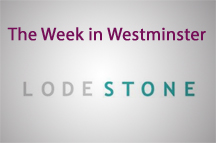 In a week where political developments have felt like they have been changing on an hourly basis, yet not much was actually being achieved, this morning it was announced there has finally been "sufficient progress" on the EU divorce deal. It is no surprise, then, that this week’s papers have been dominated by the deal that was almost not. Though earlier this week Prime Minister Theresa May insisted that “very good progress” was being made in the Brexit talks, it is clear that it has been a week in Westminster full of political drama.
In a week where political developments have felt like they have been changing on an hourly basis, yet not much was actually being achieved, this morning it was announced there has finally been "sufficient progress" on the EU divorce deal. It is no surprise, then, that this week’s papers have been dominated by the deal that was almost not. Though earlier this week Prime Minister Theresa May insisted that “very good progress” was being made in the Brexit talks, it is clear that it has been a week in Westminster full of political drama.
For Theresa May it has been a torrid week. On Monday reports came that the UK and the EU were on the brink of sealing the deal, with a senior Brussels official briefing out that negotiations were 90% of the way there. With the clock ticking and without an agreement on the text of a potential deal, negotiations looked like they may not progress to the next phase. May went to Brussels with high hopes, but the process was brought to a halt by the DUP. The Government were bruised by the DUP limiting their power to govern in their ‘confidence and supply’ arrangement.
The discord over the Irish border – which has been building in recent weeks – ramped up and defined this stage of the negotiation. The DUP expressed their shock at how the Government had approached the Irish border question without their consultation. It was the guaranteeing of continued the “regulatory alignment” between Northern Ireland and the Republic of Ireland that Leader Arlene Foster objected to.
 With no doubt frantic, last minute discussions running through the night, May said this morning that “getting to this point has required give and take from both sides.” This part of the negotiations was about getting to the next stage, not settling any of the outstanding issues for good. The 15 page report from negotiators contains no additional guarantees for Northern Ireland and the border, but does state an undefined statement on "full alignment", if there is no big trade deal.
With no doubt frantic, last minute discussions running through the night, May said this morning that “getting to this point has required give and take from both sides.” This part of the negotiations was about getting to the next stage, not settling any of the outstanding issues for good. The 15 page report from negotiators contains no additional guarantees for Northern Ireland and the border, but does state an undefined statement on "full alignment", if there is no big trade deal.
Whilst developments with the Brexit talks were materialising, two camps of Conservative MPs were growing further apart. One side was telling May that red lines need to stay red. The other saying that she must take whatever time is necessary to get it right. The implications of what "full alignment" will mean will still be fought over by the two wings of the Conservative Party. May also reportedly faced a Cabinet revolt over her approach to Brexit. Foreign Secretary Boris Johnson and Environment, Food and Rural Affairs Secretary Michael Gove reportedly expressed "genuine fear" that May was pursuing a 'soft Brexit'.
Meanwhile, the so-called Brexit impact papers are nowhere to be seen. Giving evidence to the Brexit committee this week, Brexit Secretary David Davis admitted that the 850 pages of “boring but important” documents detailing the effects of leaving the EU on 58 areas of the economy do not include formal impact assessments. MPs have been invited to read the government’s analysis of the effects of Brexit, but only with a chaperone.
So, all in all, it has been an especially tough week in Westminster. This initial deal is a symbolic step, but not all that much has changed. With the end of the beginning of negotiation process completed, let us remember May’s words of warning, "nothing is agreed until everything is agreed.”














